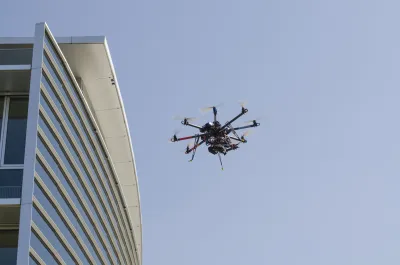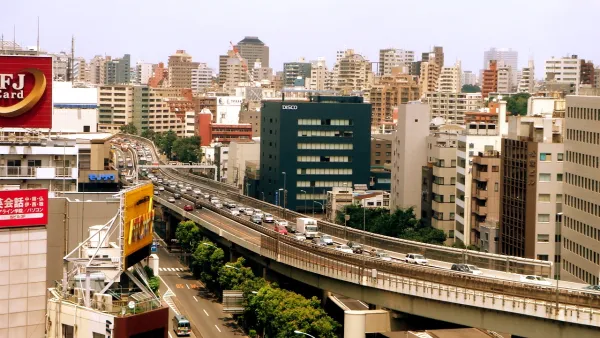With fewer human workers available to meet demand, Japanese construction company Komatsu is turning to automated equipment and drones.

Faced with too few employees to meet demand in the run up to the Tokyo 2020 Olympics, Japanese construction firm Komatsu has turned to an automated fleet of construction vehicles to do the dirty work. Ben Popper reports in The Verge that the Japanese company is now partnering with an American drone company to further speed the construction process, eliminating the need for human surveyors to draw the maps that guide the automated construction vehicles.
"To get around this problem, Komatsu has begun creating a new service it calls Smart Construction. A team of robotic vehicles scoops rock and pushes dirt without a human behind the wheel. They are guided in their work by a fleet of drones, which map the area in three dimensions and update the data in real time to track how the massive volumes of soil and cement are moving around the site."
The American drone company, Skycatch, is able to reduce the land surveying process from two weeks to "one day, or even 30 minutes"” So can we expect to see robots and drones on American construction sites? Probably not any time soon, as Skycatch CEO Christian Sanz notes that current regulations in the United States make it difficult to go to a fully automated construction crew.
FULL STORY: Robo-bulldozers guided by drones are helping ease Japan's labor shortage

National Parks Layoffs Will Cause Communities to Lose Billions
Thousands of essential park workers were laid off this week, just before the busy spring break season.

Retro-silient?: America’s First “Eco-burb,” The Woodlands Turns 50
A master-planned community north of Houston offers lessons on green infrastructure and resilient design, but falls short of its founder’s lofty affordability and walkability goals.

Delivering for America Plan Will Downgrade Mail Service in at Least 49.5 Percent of Zip Codes
Republican and Democrat lawmakers criticize the plan for its disproportionate negative impact on rural communities.

Test News Post 1
This is a summary

Test News Headline 46
Test for the image on the front page.

Balancing Bombs and Butterflies: How the National Guard Protects a Rare Species
The National Guard at Fort Indiantown Gap uses GIS technology and land management strategies to balance military training with conservation efforts, ensuring the survival of the rare eastern regal fritillary butterfly.
Urban Design for Planners 1: Software Tools
This six-course series explores essential urban design concepts using open source software and equips planners with the tools they need to participate fully in the urban design process.
Planning for Universal Design
Learn the tools for implementing Universal Design in planning regulations.
EMC Planning Group, Inc.
Planetizen
Planetizen
Mpact (formerly Rail~Volution)
Great Falls Development Authority, Inc.
HUDs Office of Policy Development and Research
NYU Wagner Graduate School of Public Service





























